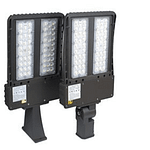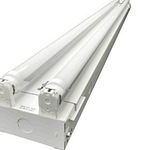Light emitting diodes, or LEDs, have been on the mainstream market for 30 years now and have taken off drastically in the past 5. But did you know it all began over 100 years ago? Today LED lights replace practically any bulb, whether it’s for your home, business, car, or farm equipment. Yet LEDs started similarly to many scientific discoveries; slowly and humbly. Let’s take a look back on how the future of the lighting industry was born in the past!
1907: The Beginning
Over 108 years ago, an Englishman by the name of Henry Joseph Round discovers electrical currents applied to inorganic material creates light. He publishes his discovery in the “Electrical World” journal, but his ventures were soon forgotten when he focused his attention on a direction-finding system for marine transport.
1921: The “Round Effect”
Oleg Lossew, a Russian physicist, observes Round’s discovery concerning electrical currents and inorganic materials and names it the “Round effect” in his honor. From the years 1927 to 1942, Lossew dedicated his time to describing this phenomenon in great detail.
1935: Electroluminescence
A French physicist by the name of Georges Destriau takes this discovery one step further by discovering light emission in zinc sulfide. To honor the man who dedicated 15 years of his life to the discovery that led to Destriau’s observation, he names it the “Lossew light.” Destriau is recognized today as the original inventor of electroluminescence.
1951: An Explanation
This year saw the development of a transistor, a major scientific step forward in semiconductor physics. This development made it possible to explain in greater detail the process of light emission.
1962: The First Light Emitting Diode
American Nick Holonyak creates the first red luminescence diode and enters it on the lighting market. This is the first LED with a visible wavelength and it marks the beginning of industrially produced LED lights.
1971: The Diode’s Progress
With the development of new semiconductor materials came LEDs in new colors including green, orange and yellow. LEDs continue to perform and progress steadily during this time.
1993: The Birth of Blue LEDs
Shuji Nakamura creates the first blue LED as well as an extremely efficient LED light in the green spectrum. In this same year he would also develop the white LED, the most common LED light sought today.
1995: The LED Launch
White LED lights are launched on the market 2 years after their discovery in 1993.
2006: The Lumens
LEDs with 100 lumens per watt are first created in this year and their efficiency could only be outmatched by gas discharge lamps.
2010: The Future of LEDs
By 2010, LEDs were being created with a whooping 250 lumens per watt and the progress didn’t stop there. Today there are lights being created for specific breeds of livestock, including swine and poultry, as well as plants.
Why the Rise in LED Lights?
You may be asking, “What makes LED bulbs so sought after?” The reason is LED bulbs are vastly more cost-effective and environmentally friendly in comparison to incandescent bulbs because LEDs aren’t bulbs at all! For most incandescent and fluorescent bulbs, heat is a byproduct of the light that is created. 90 percent of the energy incandescent lights use goes towards heating the bulb, leaving only 10 percent creating actual light. CFL lights use 60 percent of their energy for heat production and only 40 percent for light. However, LED lights use only 20 percent of their energy to create heat and 80 percent is used for creating brighter, whiter light. The rise in LEDs popularity isn’t due to a trend. It’s quite simple; you receive the best quality of light while saving the most amount of money. It’s a no brainer! While the development of LEDs took the span of 100 years, it has proven to be well worth the effort today.
Posted in LED Lighting Basics
Tagged LED lights, The Future of LEDs, The History of LEDs















